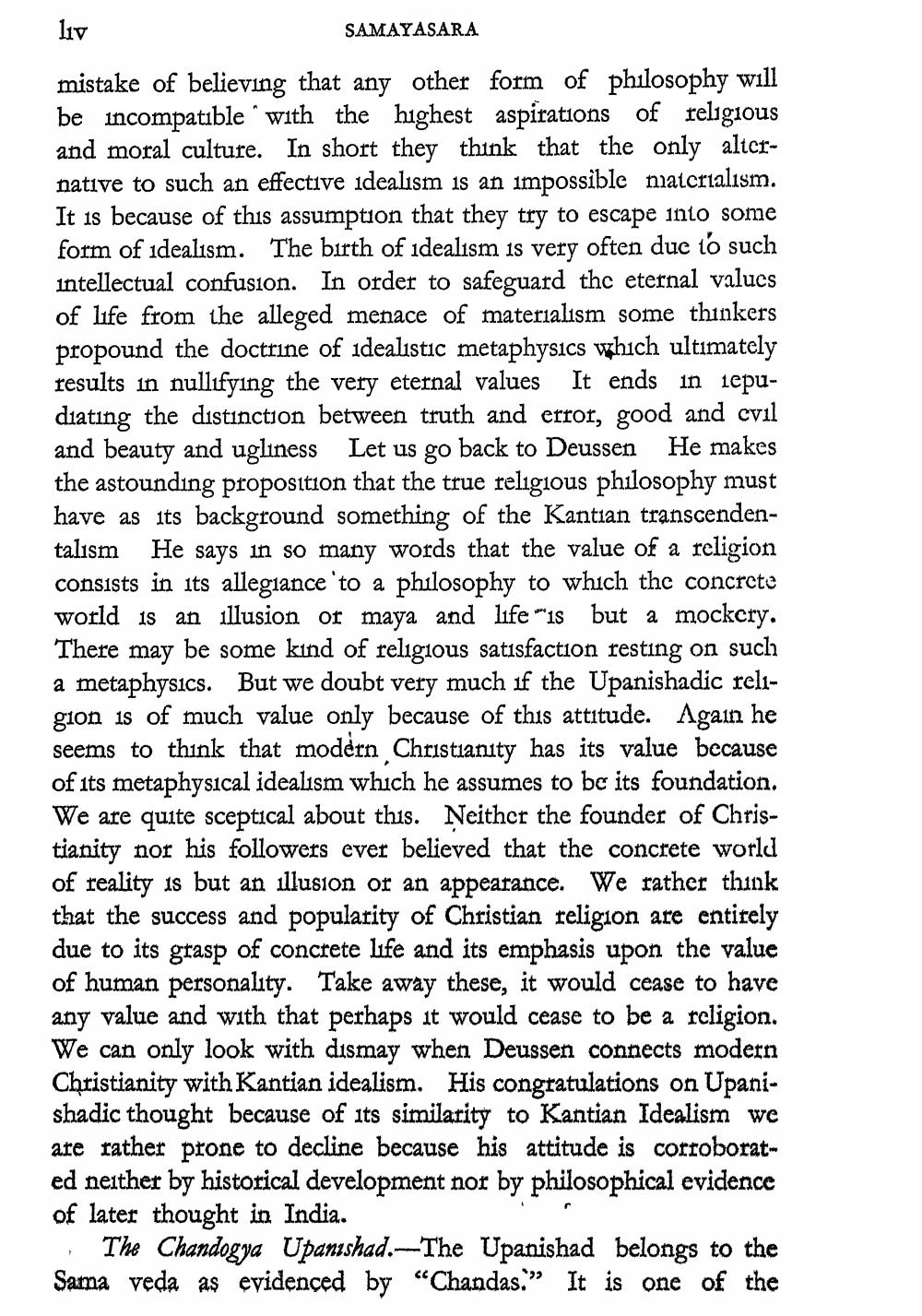________________
117
SAMAYASARA
mistake of believing that any other form of philosophy will be incompatible with the highest aspirations of religious and moral culture. In short they think that the only alternative to such an effective idealism is an impossible niatcrialism. It is because of this assumption that they try to escape into some form of idealism. The birth of idealism is very often due to such intellectual confusion. In order to safeguard thc eternal values of life from the alleged menace of materialism some thinkers propound the doctrine of idealistic metaphysics which ultimately results in nullifying the very eternal values It ends in iepudiating the distinction between truth and error, good and evil and beauty and ugliness Let us go back to Deussen He makes the astounding proposition that the true religious philosophy must have as its background something of the Kantian transcendentalism He says in so many words that the value of a religion consists in its allegiance to a philosophy to which the concrete world is an illusion or maya and life is but a mockery. There may be some kind of religious satisfaction resting on such a metaphysics. But we doubt very much if the Upanishadic religion is of much value only because of this attitude. Again he seems to think that modern Christianity has its value because of its metaphysical idealism which he assumes to be its foundation. We are quite sceptical about this. Neither the founder of Christianity nor his followers ever believed that the concrete world of reality is but an illusion or an appearance. We rather think that the success and popularity of Christian religion are entirely due to its grasp of concrete life and its emphasis upon the value of human personality. Take away these, it would cease to have any value and with that perhaps it would cease to be a religion. We can only look with dismay when Deussen connects modern Christianity with Kantian idealism. His congratulations on Upanishadic thought because of its similarity to Kantian Idealism we are rather prone to decline because his attitude is corroborated neither by historical development nor by philosophical evidence of later thought in India.
The Chandogya Upanishad.-The Upanishad belongs to the Sama veda as evidenced by “Chandas.” It is one of the




